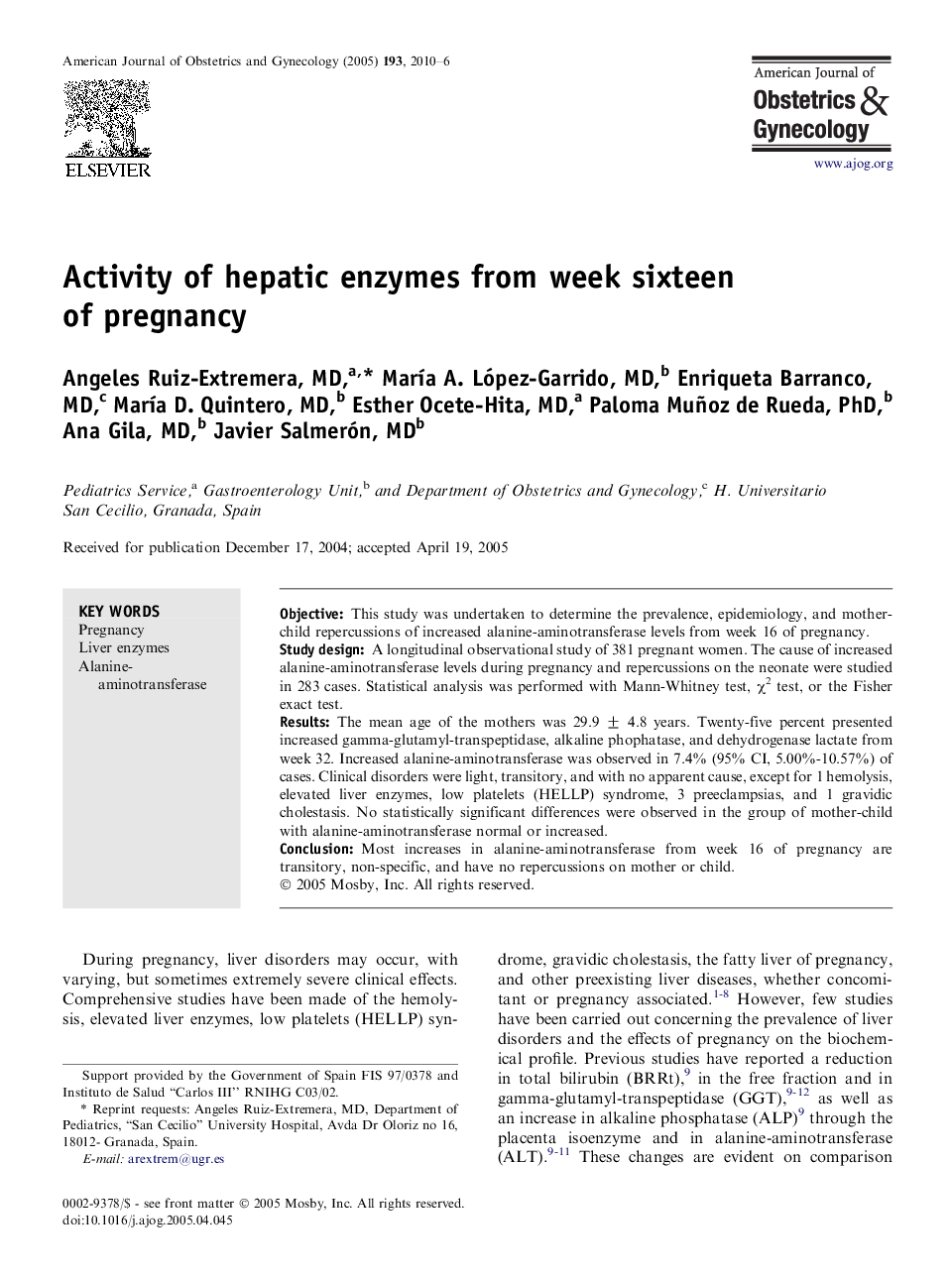| Article ID | Journal | Published Year | Pages | File Type |
|---|---|---|---|---|
| 3440873 | American Journal of Obstetrics and Gynecology | 2016 | 7 Pages |
ObjectiveThis study was undertaken to determine the prevalence, epidemiology, and mother-child repercussions of increased alanine-aminotransferase levels from week 16 of pregnancy.Study designA longitudinal observational study of 381 pregnant women. The cause of increased alanine-aminotransferase levels during pregnancy and repercussions on the neonate were studied in 283 cases. Statistical analysis was performed with Mann-Whitney test, χ2 test, or the Fisher exact test.ResultsThe mean age of the mothers was 29.9 ± 4.8 years. Twenty-five percent presented increased gamma-glutamyl-transpeptidase, alkaline phophatase, and dehydrogenase lactate from week 32. Increased alanine-aminotransferase was observed in 7.4% (95% CI, 5.00%-10.57%) of cases. Clinical disorders were light, transitory, and with no apparent cause, except for 1 hemolysis, elevated liver enzymes, low platelets (HELLP) syndrome, 3 preeclampsias, and 1 gravidic cholestasis. No statistically significant differences were observed in the group of mother-child with alanine-aminotransferase normal or increased.ConclusionMost increases in alanine-aminotransferase from week 16 of pregnancy are transitory, non-specific, and have no repercussions on mother or child.
